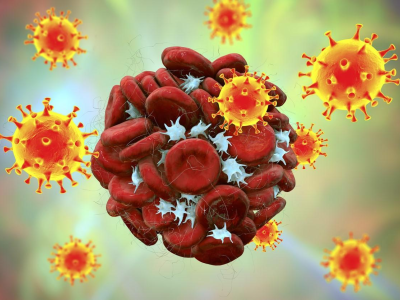Flu activity is at high or very high levels in 30 states as the nation approaches the Thanksgiving holiday, with H3N2 still dominant but with a growing percentage of 2009 H1N1 viruses, the US Centers for Disease Control and Prevention (CDC) said today in its weekly update.
The early flu surge is adding to pressure on health systems in light of impacts from other respiratory viruses, especially respiratory syncytial virus (RSV) in children.
Flu expands from southern hot spots
Earlier in the season, the main flu hot spots were in the southeastern states, but now much of the country is shaded in red and purple, which signifies high and very high levels. Flu levels are still low in some northern-tier states, such as Minnesota, Michigan, and Maine.
But even in Minnesota, flu outbreaks in school doubled over the past week, according to the latest surveillance report from the Minnesota Department of Health.
The percentage of respiratory specimens that tested positive for flu rose from 12.8% to 14.7% last week at clinical labs, and the percentage of outpatient visits for flulike illness, which can include other respiratory viruses with similar symptoms, rose from 5.5% to 5.8%.
Though most viruses are still the H3N2 strain, the CDC said the proportion of H1N1 detections has risen over the past 3 weeks and now makes up about 26% of subtyped influenza A viruses.
Hospitalization rates for flu are still at the highest level for this point in the season since the 2010-2011 season and are highest in seniors, followed by children up to 4 years old.
Two more pediatric flu deaths were reported, bringing the season's total to seven. The two latest deaths both occurred during the first week of November. One involved H3N2, and the other was due to H1N1.
Calls for federal action to battle RSV surge
Earlier this week, the American Academy of Pediatrics and the Children's Hospital Association sent a letter to federal health officials asking them to declare a public health emergency for a surge of kids seeking care for respiratory viruses and mental health concerns.
In the letter, Mark Wietecha, MS, MBA, the CHA's chief executive officer, said, "Our system is stretched to its limit and without immediate attention the crisis will only worsen." The groups said flexibilities afforded under the COVID-19 emergency were crucial during pandemic surges and fluctuations and that children and children's providers need the same support to keep up with the surge of illnesses and pressure on the health systems.
Yesterday, the Biden administration responded, stopping short of declaring a health emergency but emphasizing that it is ready to help communities that need help, according to NBC News.
An NBC analysis of federal hospital data reveals that as of Nov 16, 78% of pediatric beds nationwide are full, with seven states reporting that beds are more than 90% full.
US cases ebb as BQ.1 nudges ahead of BA.5
In its weekly review of COVID data today, the CDC said the 7-day average for new daily COVID-19 cases as of Nov 16 is 40,102, down 3.2% from the week before. The daily average for hospitalizations also declined, down 4.4% compared to the past week. However, the CDC said it is seeing some shifts in hospitalization patterns. In October, the hospitalization rate for babies as old as 6 months old began rising and is now the highest of all pediatric age-groups.
The daily average for deaths is also declining, down 5.3% compared to the previous week.
In Illinois, COVID-19 activity is elevated in 21 counties, and the director of the Illinois Department of Public Health (IDPH) urged state residents to take precautions to protect themselves and their loved ones as they celebrate the Thanksgiving holiday.
Sameer Vohra, MD, JD, in a statement said with multiple respiratory viruses circulating, residents should use all tools available to stay safe and healthy. "These strategies include COVID-19 testing, especially if visiting someone at risk for severe disease, enhanced ventilation, good hand hygiene, staying home if sick, and getting up to date with both the COVID-19 bivalent booster and the flu shot," he said.
So far, 35.4 million people have received the updated bivalent COVID-19 booster, the CDC said, adding that only 48.7% of Americans have received any booster doses.
In its updated variant projections today, the CDC said BQ.1 is now estimated to make up 25.5% of sequenced samples, putting it ahead of its BA.5 predecessor. Also, BQ.1.1 makes up 24.2% of viruses. The CDC said other variants make up 3.1% of samples, much of it XBB, a recombinant Omicron virus that has fueled new surges in parts of Asia.
In other COVID developments:
- In its weekly COVID-19 update today, the European Centre for Disease Prevention and Control (ECDC) said markers in the region continue to decline, even in seniors. The group predicts that COVID levels will remain stable over the next 2 weeks.
- Pfizer and BioNTech today said their updated BA.4/BA.5 COVID booster shows strong antibody response against newer Omicron sublineages, including BQ.1, when compared to the original vaccine.



















